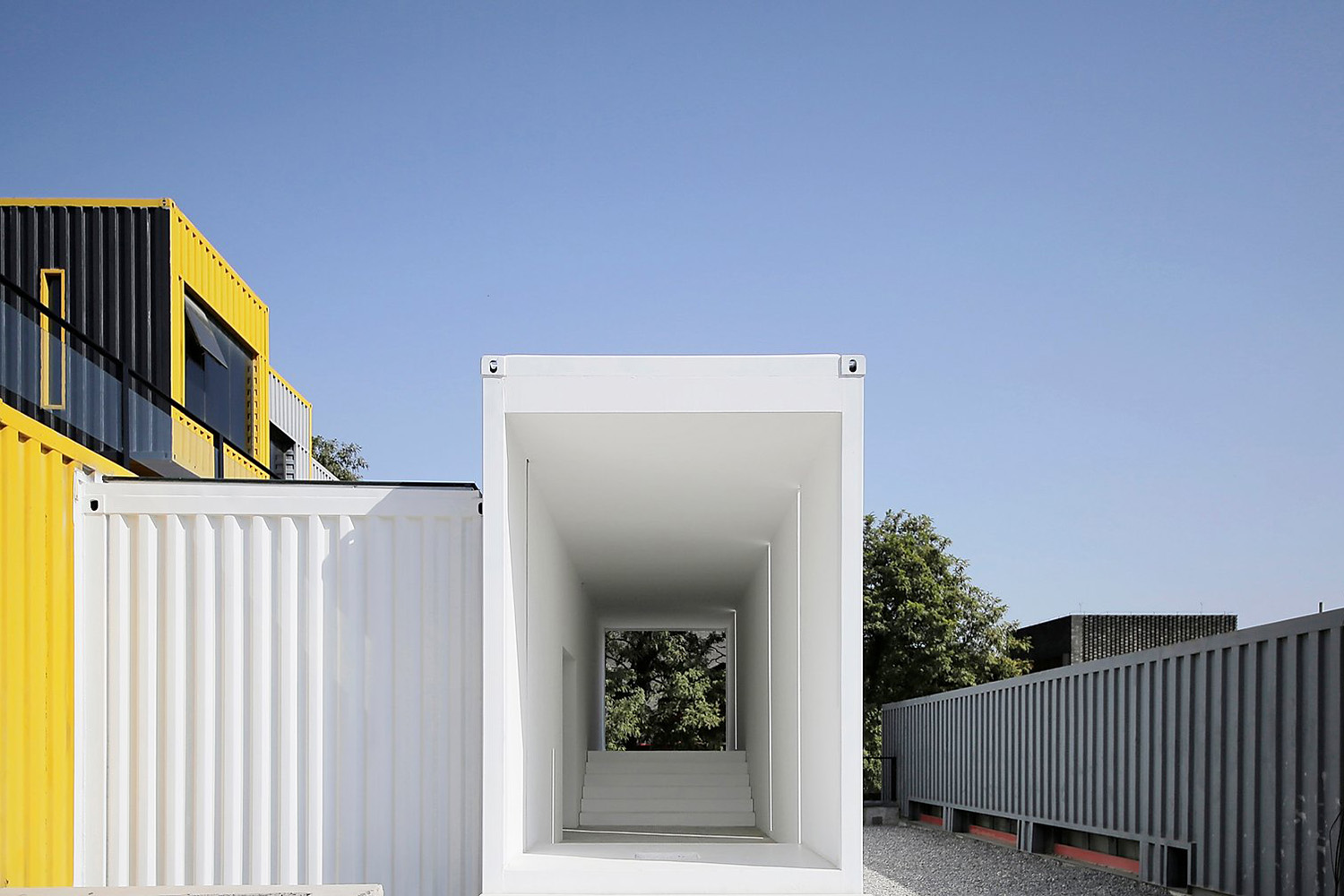KEEKO Watch

Located in the Songzhuang Art Colony, in Beijing, is the undoubtedly unique Meditation Space for Creation. The contemporary arts center was designed by Jun Murata, of the architecture firm JAM. Jun Murata’s centre is a destination for art and contemplation, and uses light and nature in the architecture to embolden a meditative state in its visitors.
The centre is comprised of several shipping containers stacked together like building blocks. The colours of the containers delineate their use: the grey and boldly painted yellow indicate the gallery spaces, while the long, low white container holds a special contemplation space.
Carefully designed openings are cut in the containers, allowing light to pass through to the interior in very specific ways. The light alternates between strong and directed and softly diffused, becoming an ever-changing art installation in its own right. The humble shipping container is perfectly suited to the creation of art galleries: the long and narrow structure lends itself to a gallery layout, while the industrial look feels right at home in the world of contemporary art.
The space’s many rooms are used as galleries for a wide array of contemporary artists. The semi-permanent exhibits, designed hand-in-hand with the architect, all work with the context of the building design. One particularly striking exhibit is a set of stairs wrapped in an abstract black and white design. The stairs are captivating, and the pattern gives the impression of paint being poured from the top landing.
On the east side a small pool of water sits elevated on a flight of stairs. The pool serves as a reflection pond, mirroring the trees in the garden beyond the museum. The wall behind the water is left intentionally open, allowing wind to pass directly through, rippling the water and allowing reflecting light to dance along its surface.
At the end of the white container-room another wall is missing, exposing the viewer to a glimpse of greenery through its framed opening. White walls and floors emphasize the contrast between this built and natural environment, and the effect is quite soothing.
This room is perhaps the best example of what the Meditation Space for Creation aims to achieve. By removing the user from the context of the outside world, the centre encourages the mind to slow and turn inwards. Captivated by the various light experiences and glimpses of greenery, the mind is reoriented into a world of peace and relaxation. According to the architects, the centre aims to encourage the human mind to approach “the inner world of nothing”.










